This article was updated in August 2025 to reflect the most recent information on LGMD since its original publication in March 2025.
As Limb-Girdle Muscular Dystrophy (LGMD) progresses, it can become harder to walk, climb stairs and manage everyday tasks. But with the right tools and support, many people are able to stay active and independent for longer.
This blog looks at the mobility challenges people with LGMD may face. It shares practical ways to make daily life easier, such as physical therapy, mobility aids, assistive devices, and home modifications. These tools can help support everyday activities and contribute to overall well-being.
With this blog, we aim to provide clear, helpful information to support daily living and future planning for people with LGMD and their loved ones.
Limb-Girdle Muscular Dystrophy (LGMD) is a group of genetic conditions that cause muscles to become weak and shrink over time. It mainly affects muscles near the center of the body, like those in the shoulders, upper arms, pelvic area, thighs and hips. 1, 2, 3
As the condition progresses, it can become harder to move around or do daily activities like walking, standing, or getting dressed.1, 2, 3
This blog looks at how LGMD affects movement. It also shares information about practical tools, such as mobility aids, assistive devices, and home modifications, that can help people with LGMD make everyday life easier and stay independent for longer.
People with Limb-Girdle Muscular Dystrophy (LGMD) often have trouble moving because their muscles get weaker over time. This usually affects muscles in the hips, legs, and shoulders.
The first LGMD signs can appear in both childhood and adulthood. When they start earlier, the condition may progress more quickly. However, the onset and severity of the symptoms varies widely among the different subtypes. 2, 3
Common mobility challenges for people with LGMD may include:
Physical therapy can help people with Limb-Girdle Muscular Dystrophy (LGMD) maintain mobility and stay as active as possible. It can also help stretch the joints and lower the risk of contractures. 3
Every therapy plan is made for each person’s individual needs. That’s because muscles in LGMD can be easily damaged. A therapist will choose safe exercises to help muscles stay strong without causing harm.4
There are two types of exercise that may help people with LGMD. 4
Before starting any exercise program, it is important to consult a physician or healthcare provider to make sure the exercises are safe.
People with Limb-Girdle Muscular Dystrophy (LGMD) may use mobility aids or other helpful tools to stay active and independent for as long as possible. 7
A physical or occupational therapist can help find the right device based on the person’s needs. They also show how to use it safely. 7
Some common mobility aids for LGMD include:
In the early stages of Limb-Girdle Muscular Dystrophy (LGMD), the use of walking aids can provide support to prevent falls. It can also reduce fatigue and stress on muscles. 7
Some commonly used walking aid options include:
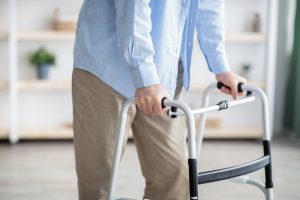
Walking aids can help individuals stay mobile for as long as possible. However, some people may need more support as the condition progresses. 7 Choosing the right device depends on individual needs and daily activities. It may include:
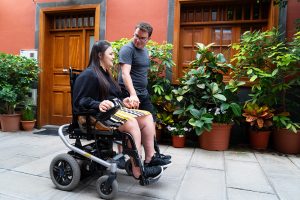
Orthotic devices (also called orthoses) are braces that support weakened muscles and make walking easier. They can also prevent contractures (joint stiffness) from getting worse.9
Common options for people with LGMD include:
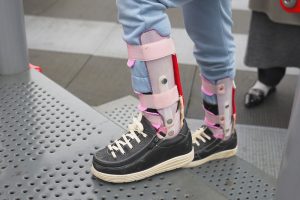
Because Limb-Girdle Muscular Dystrophy (LGMD) gets worse over time, it’s helpful to think about future needs, not just current ones. Choosing the right brace early can help a person stay independent and comfortable for longer.8
Adapting the living space can make daily activities more manageable and safer for people with Limb-Girdle Muscular Dystrophy (LGMD).
Because LGMD may progress over time, it helps to plan for both current and future needs. [7] What changes are needed at home can vary based on the person’s needs and how fast their condition is changing:
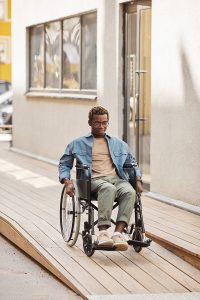
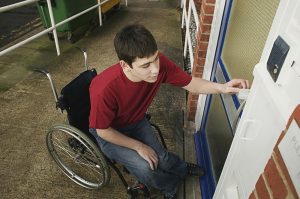
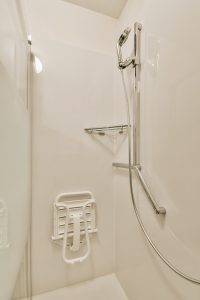
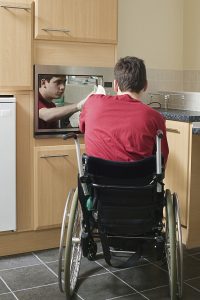
For more guidance, you can visit the Muscular Dystrophy UK Adaptations Manual and the MDA Home Modifications Guide for detailed recommendations on accessible home modifications.
Managing mobility challenges for people with Limb-Girdle Muscular Dystrophy usually involves a combination of therapies, assistive devices, and home adaptations. This can help people stay independent and feel better for longer.
Physical therapy can help people stay mobile, keep muscles strong, and lower the risk of tight joints (called contractures). Some exercises may include step-ups, squats, or swimming.
Walking aids, such as canes, walkers, wheelchairs, and braces, can give support and help people stay active as the condition progresses. They also reduce tiredness and make movement more comfortable.
Home modifications, such as adding ramps, roll-in showers, grab bars, and easy-to-reach storage, can make daily life safer and easier.
With support from doctors or therapists, these strategies can help people with LGMD stay active and feel more in control of their daily life.
If you want to explore clinical trial options, you can book a call with a Patient Navigator to discover your options and learn more about clinical trials.
At myTomorrows, we have a team of Patient Navigators, who are multi-lingual professionals with a medical background, who can help you to explore your treatment options and support you through your journey.
Patient Navigators do not provide medical advice. They offer support in exploring publicly available information about clinical trials and investigational options.
1] MedlinePlus Muscular Dystrophy, “Limb-girdle muscular dystrophy.” Accessed: Jan. 28, 2025. [Online]. Available: https://medlineplus.gov/genetics/condition/limb-girdle-muscular-dystrophy/
[2] Cleveland, “Limb-Girdle Muscular Dystrophy.” Accessed: Jan. 27, 2025. [Online]. Available: https://my.clevelandclinic.org/health/diseases/limb-girdle-muscular-dystrophy-lgmd
[3] MDA, “Limb-Girdle Muscular Dystrophy (LGMD).” Accessed: Jan. 22, 2025. [Online]. Available: https://www.mda.org/disease/limb-girdle-muscular-dystrophy/
[4] Muscular Dystrophy News, “Mobility Devices.” Accessed: Jan. 27, 2025. [Online]. Available: https://musculardystrophynews.com/mobility-devices/
[5] MDA, “Get Ready to Roll,” 2018.
[6] Muscular Dystrophy News Today, “Orthopedic Devices.” Accessed: Jan. 28, 2025. [Online]. Available: https://musculardystrophynews.com/orthotic-devices/
[7] Muscular Dystrophy UK, “Manual: Adaptations manual: for children and adults with muscle-wasting conditions.”
[8] MDA, “Home Modifications.” Accessed: Jan. 23, 2025. [Online]. Available: https://www.mda.org/sites/default/files/HomeModifications_0.pdf
[9] G. D’Este et al., “Limb-girdle muscular dystrophies: A scoping review and overview of currently available rehabilitation strategies.,” Muscle Nerve, vol. 71, no. 2, pp. 138–146, Feb. 2025, doi: 10.1002/mus.28284.
[10] M. Sveen et al., “Resistance training in patients with limb‐girdle and becker muscular dystrophies,” Muscle Nerve, vol. 47, no. 2, pp. 163–169, Feb. 2013, doi: 10.1002/mus.23491.
[11] E. L. Bostock et al., “The Effects of Resistance Exercise Training on Strength and Functional Tasks in Adults With Limb-Girdle, Becker, and Facioscapulohumeral Dystrophies,” Front Neurol, vol. 10, Nov. 2019, doi: 10.3389/fneur.2019.01216.
[12] G. Siciliano, C. Simoncini, S. Giannotti, V. Zampa, C. Angelini, and G. Ricci, “Muscle exercise in limb girdle muscular dystrophies: pitfall and advantages.,” Acta Myol, vol. 34, no. 1, pp. 3–8, May 2015.
About the author
Medical Content Writer at myTomorrows
Dr. Andrea Enguita Marruedo holds a master’s in Genetics and Cell Biology from the Autonomous University of Madrid and a PhD in Developmental Biology from the Erasmus Medical Centre in Rotterdam. She began her career in medical writing after completing her doctoral studies and has covered a wide range of therapeutic areas, including neuromuscular and neurodegenerative disorders, cancer, and diabetes.
Andrea specializes in translating complex biomedical topics into clear, accessible content for patients and healthcare professionals. With a strong research background and a passion for science communication, she is committed to delivering accurate, well-referenced content that supports greater awareness and understanding of medical topics among patients, caregivers, and clinicians.
Andrea Enguita 20 Mar 2025